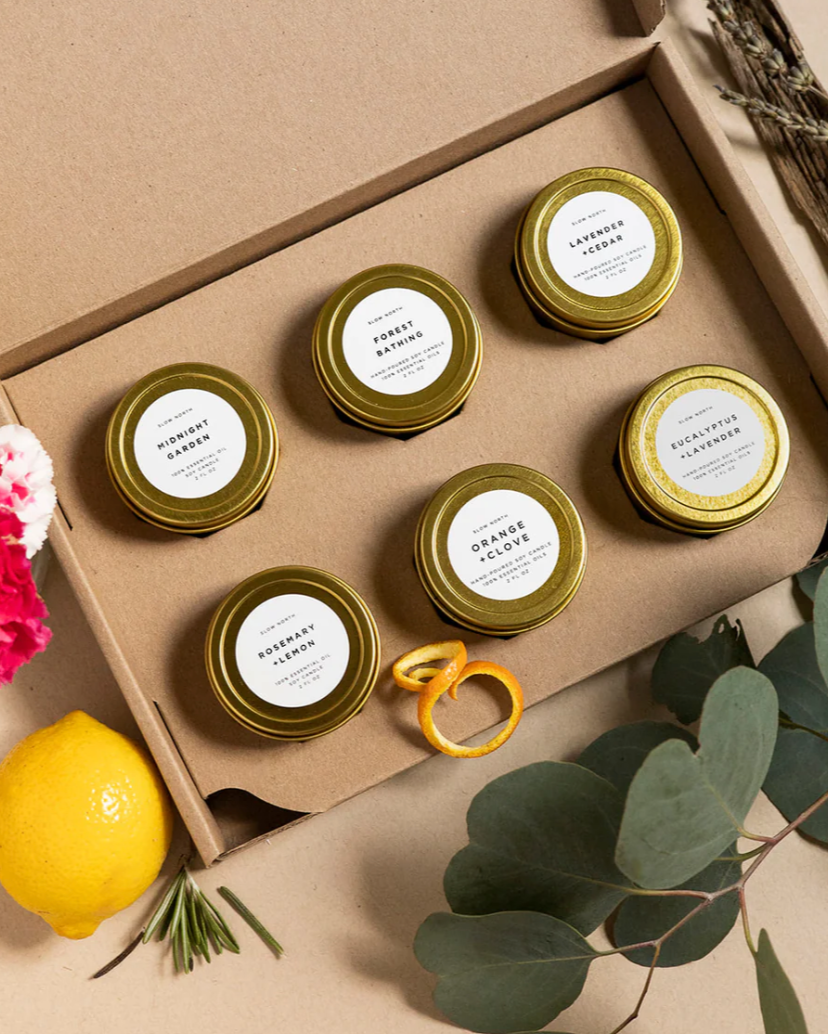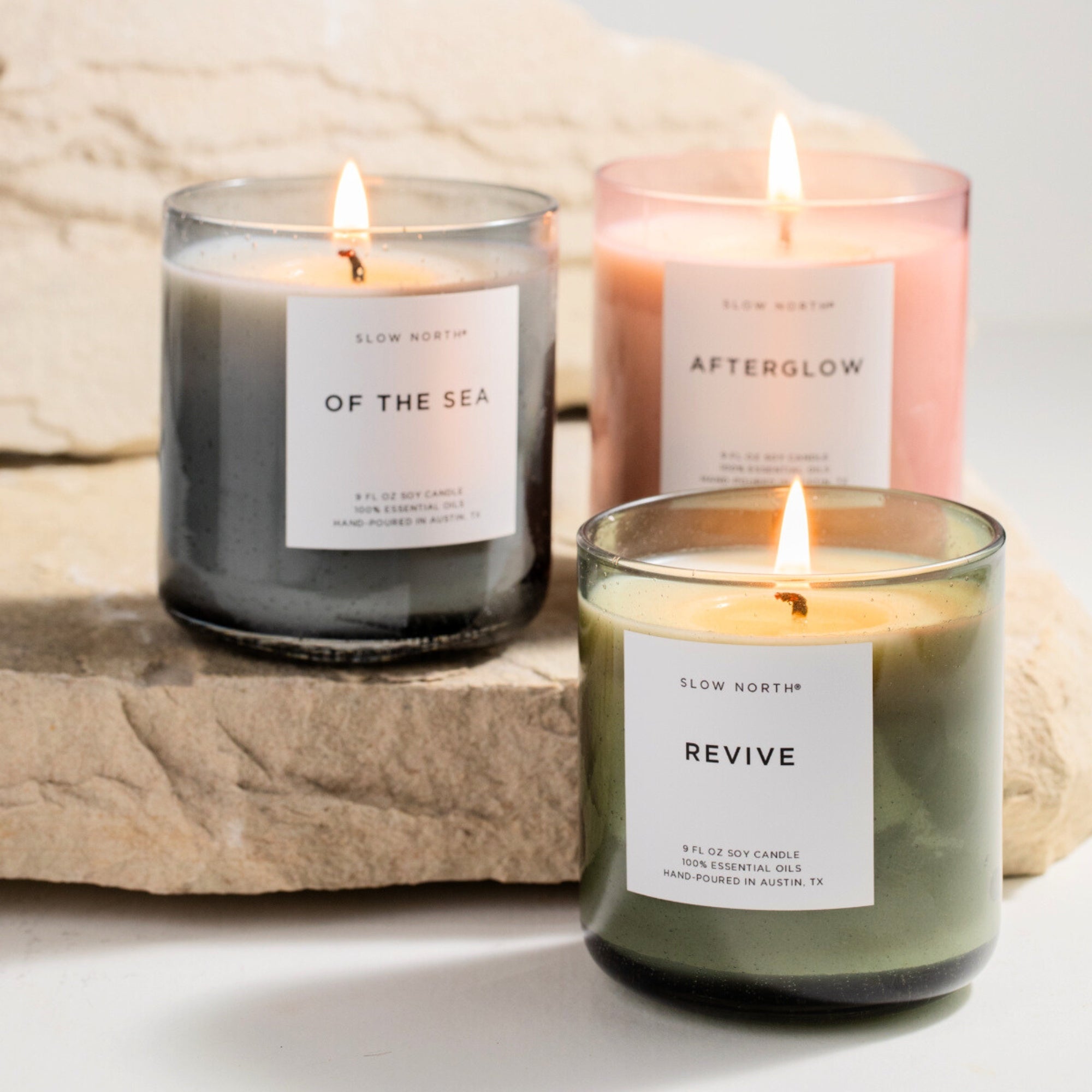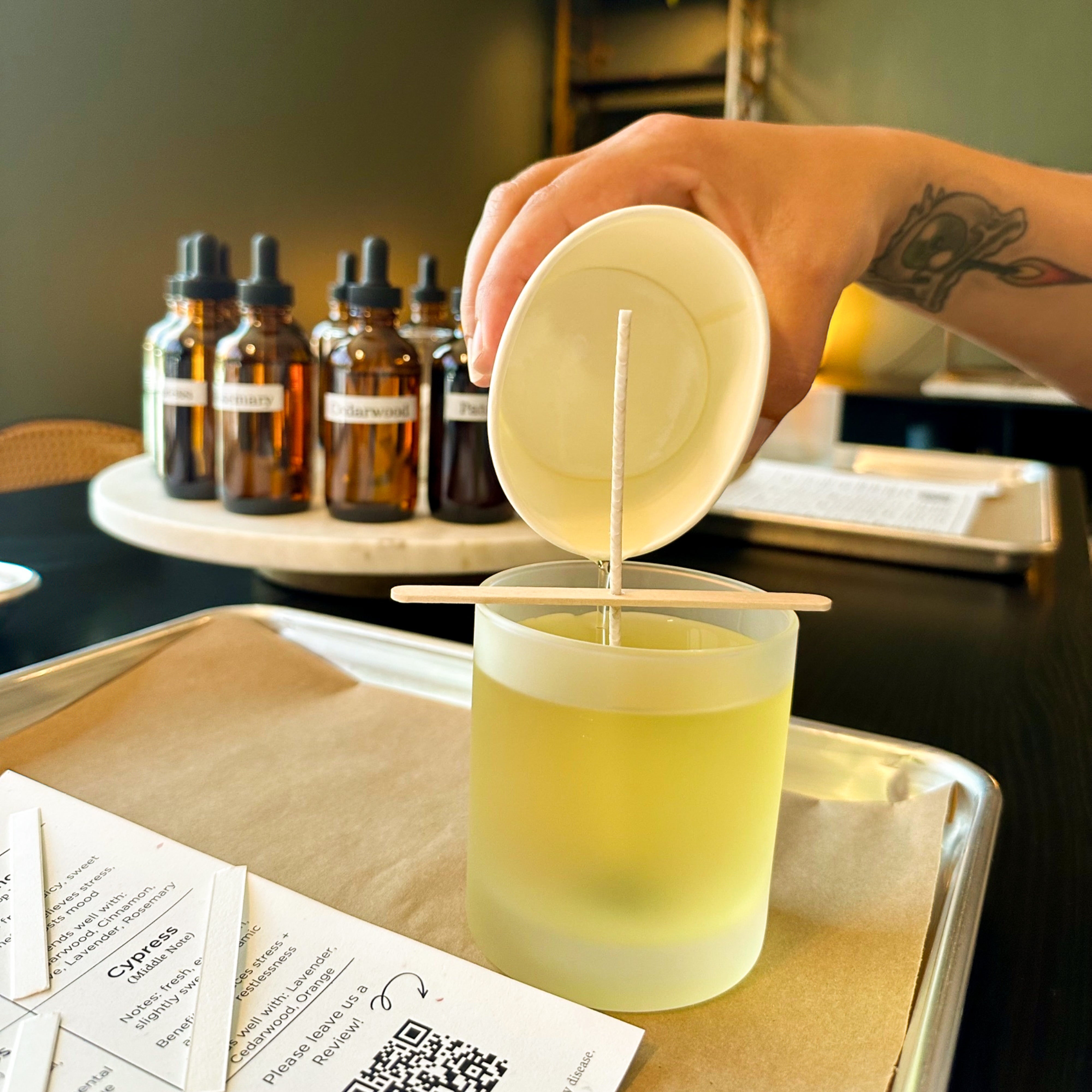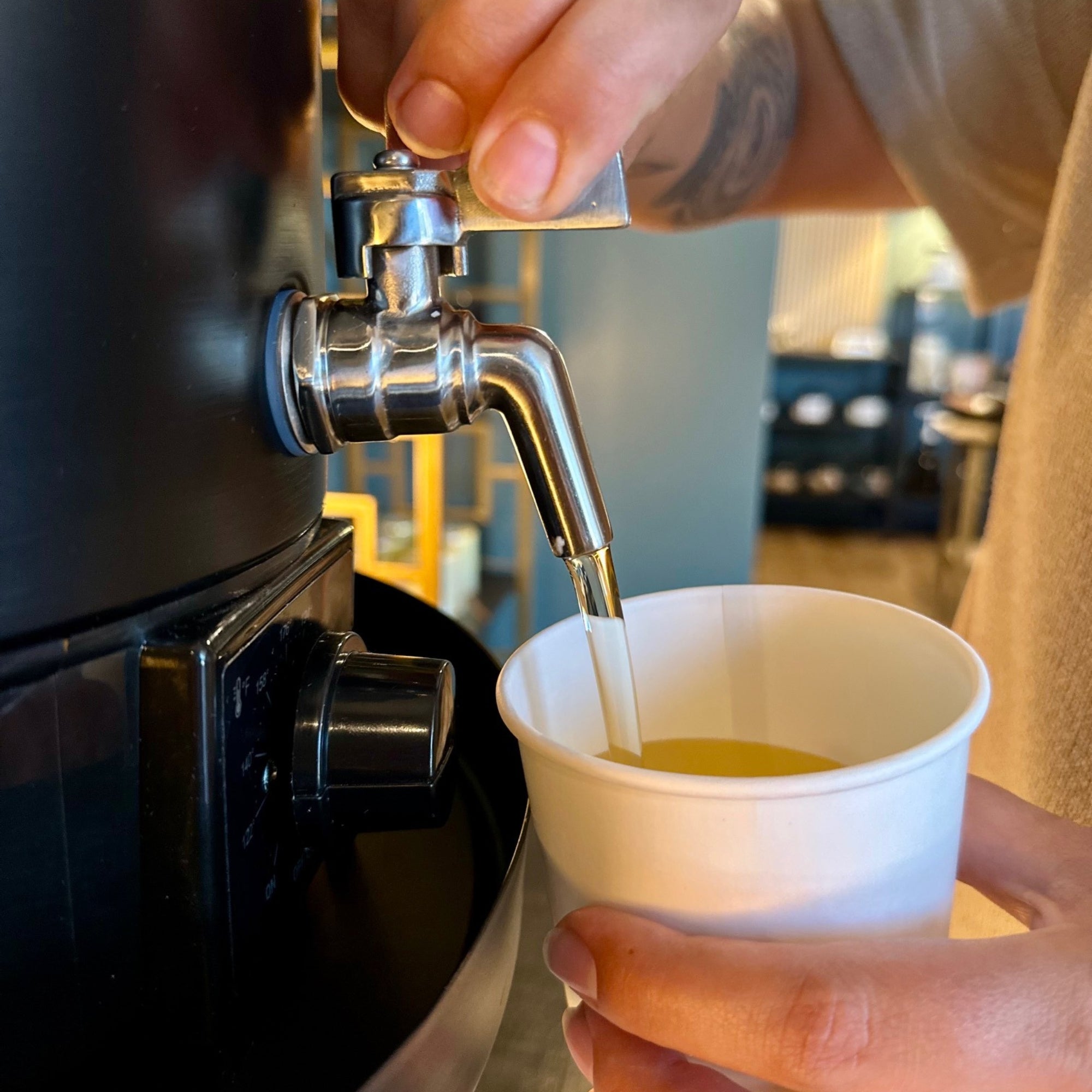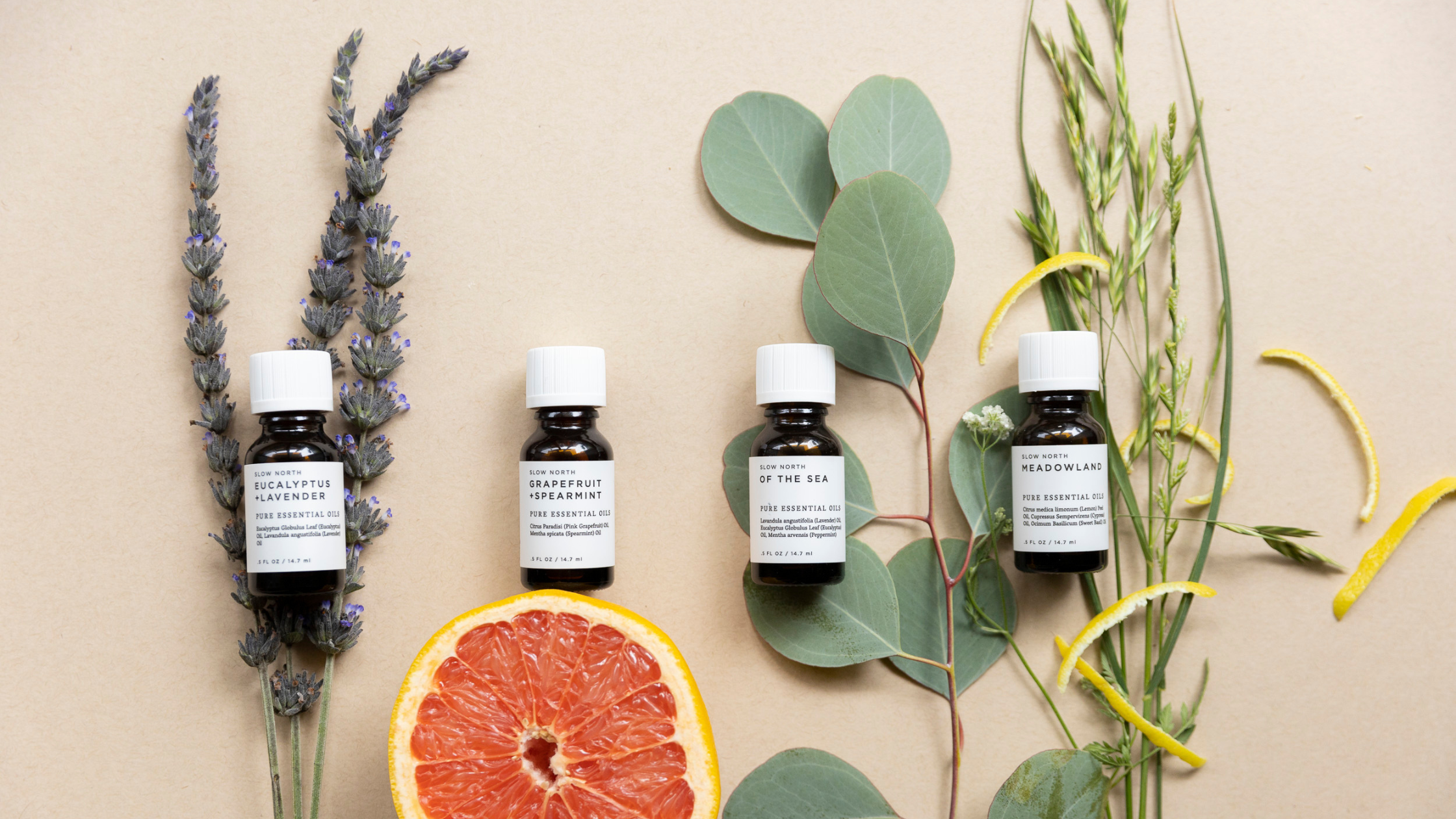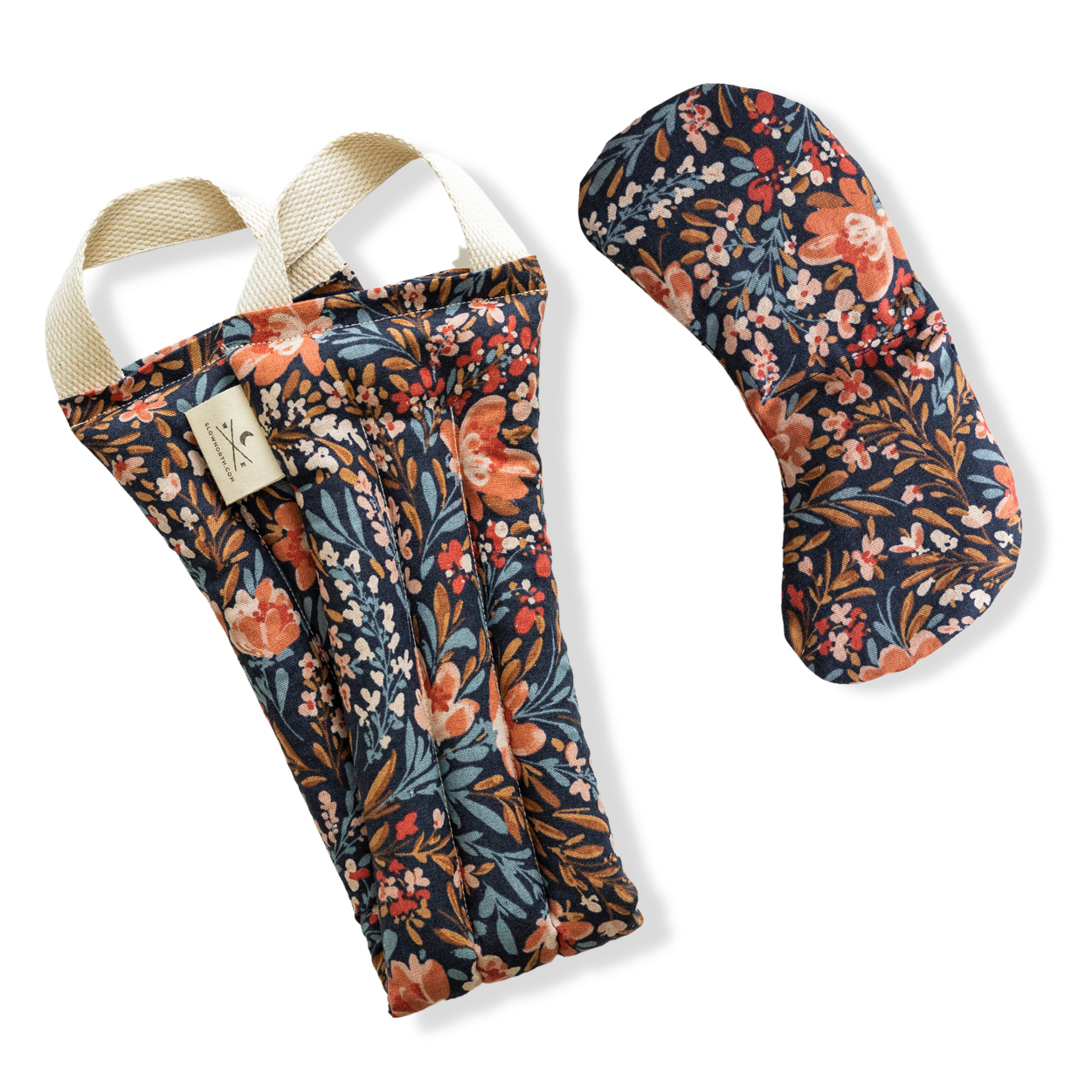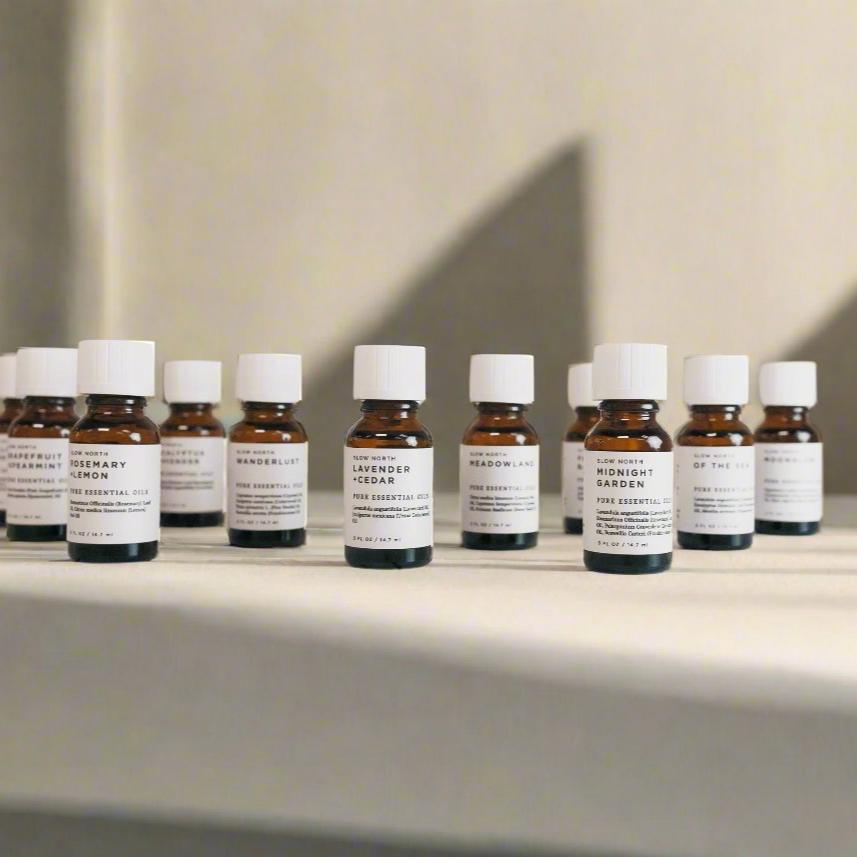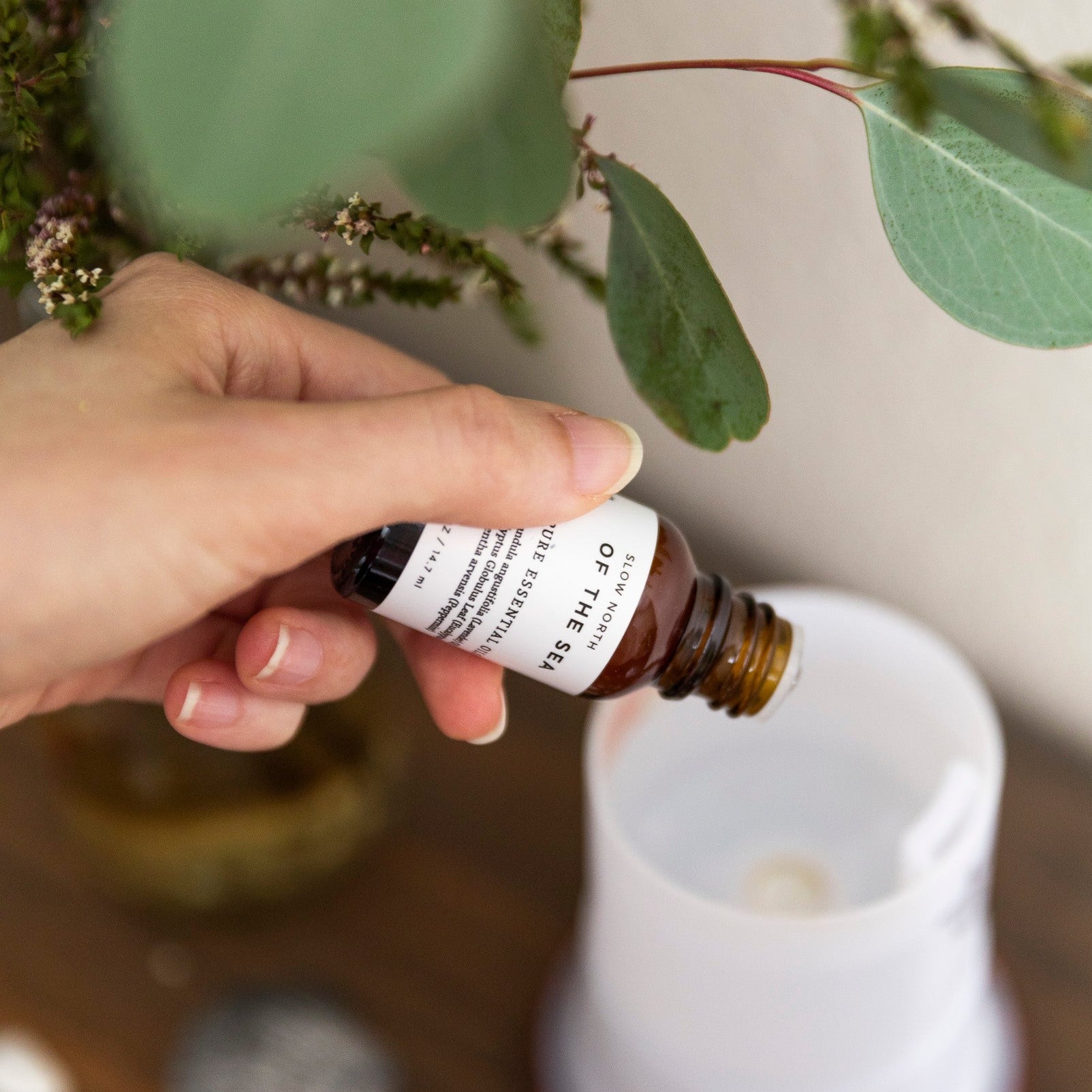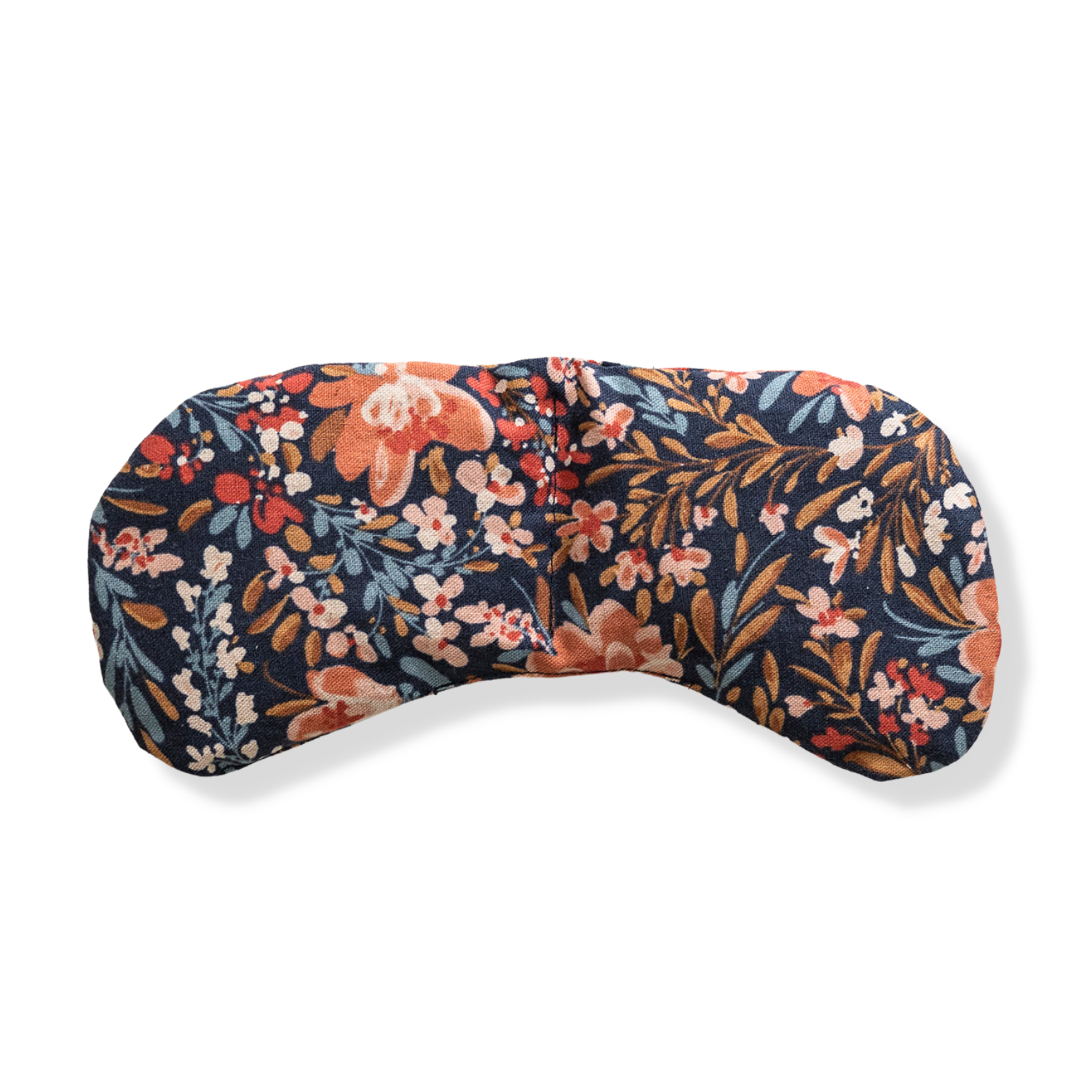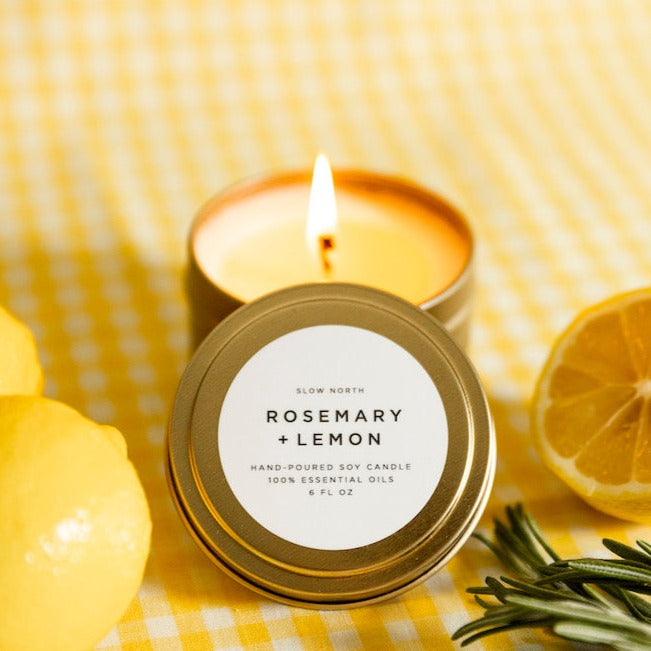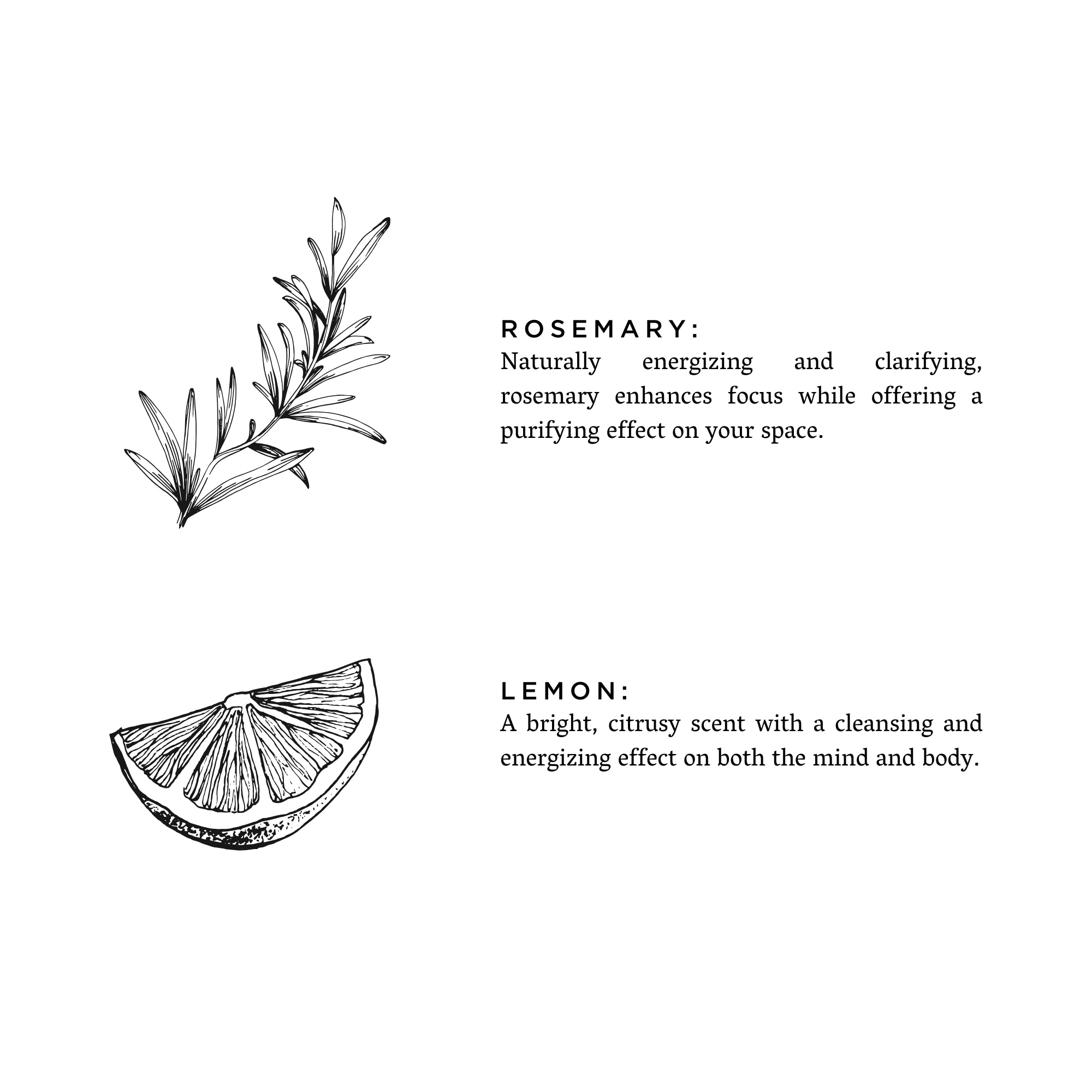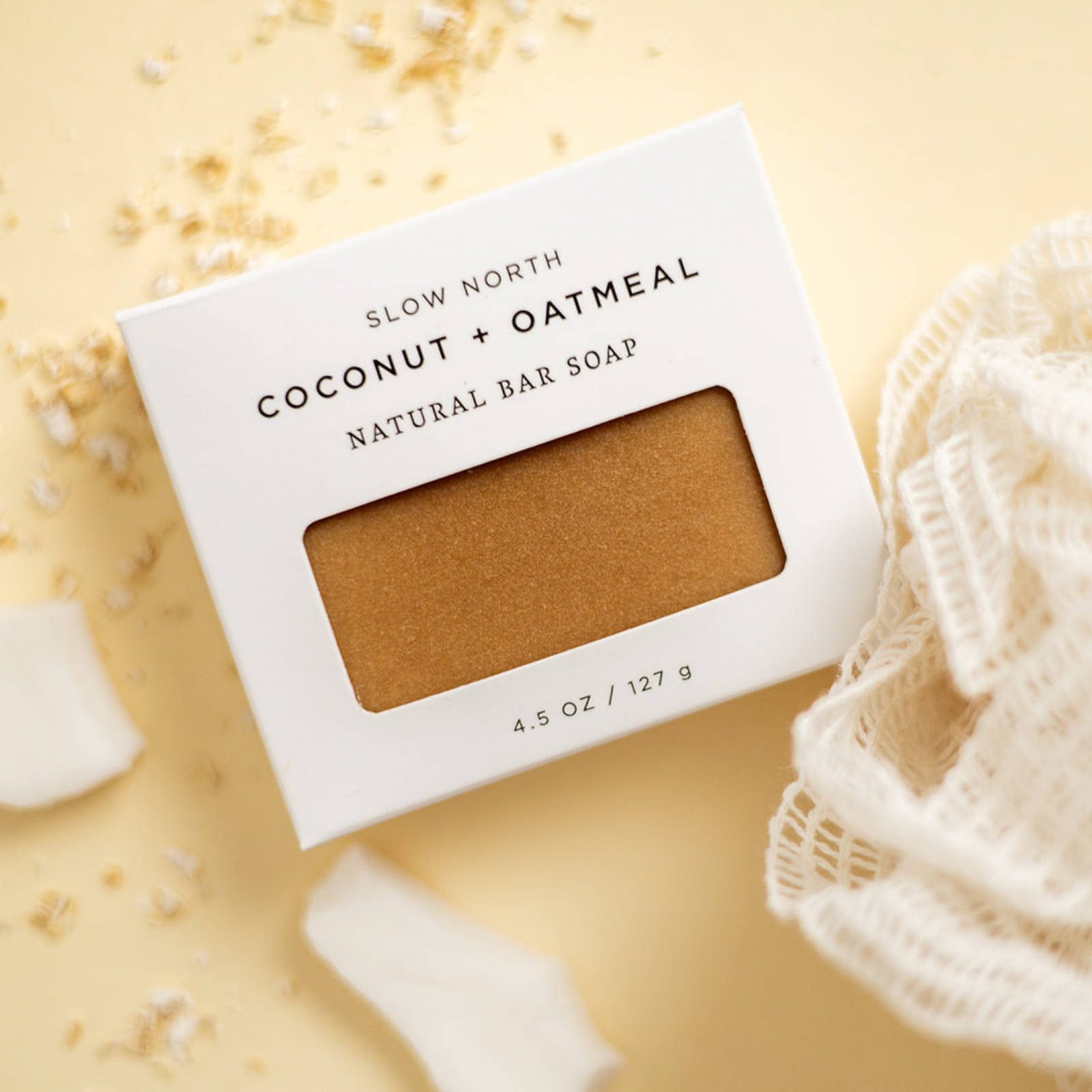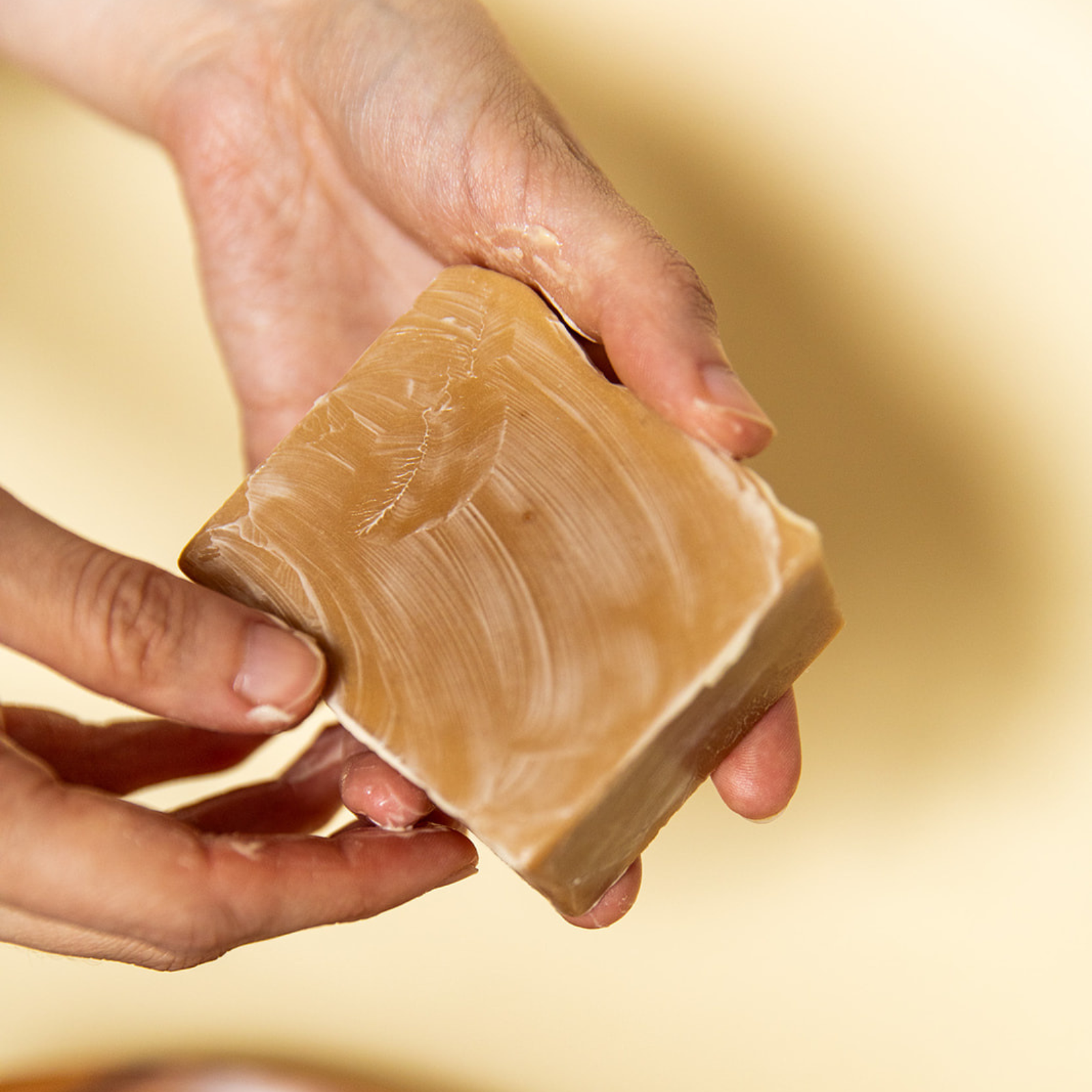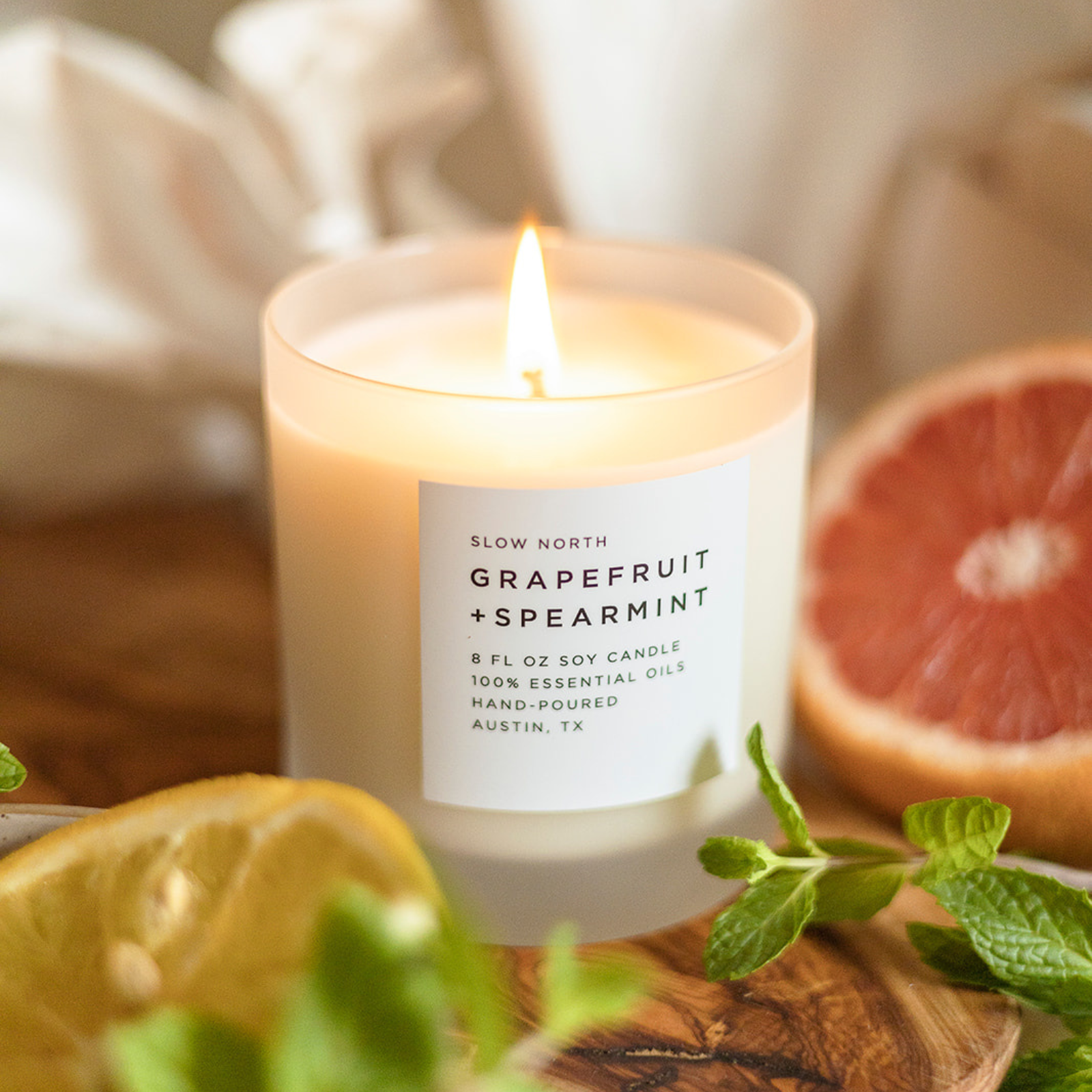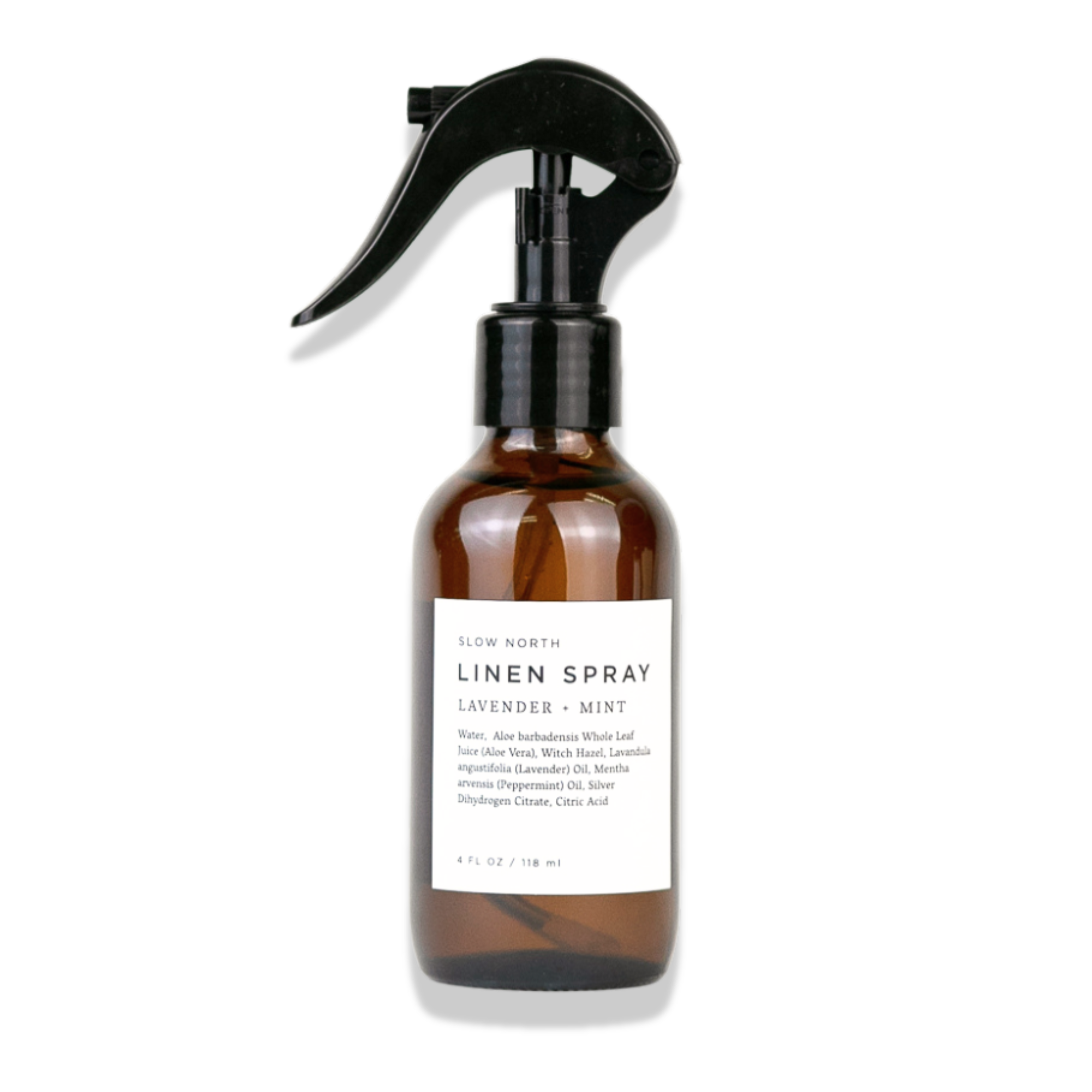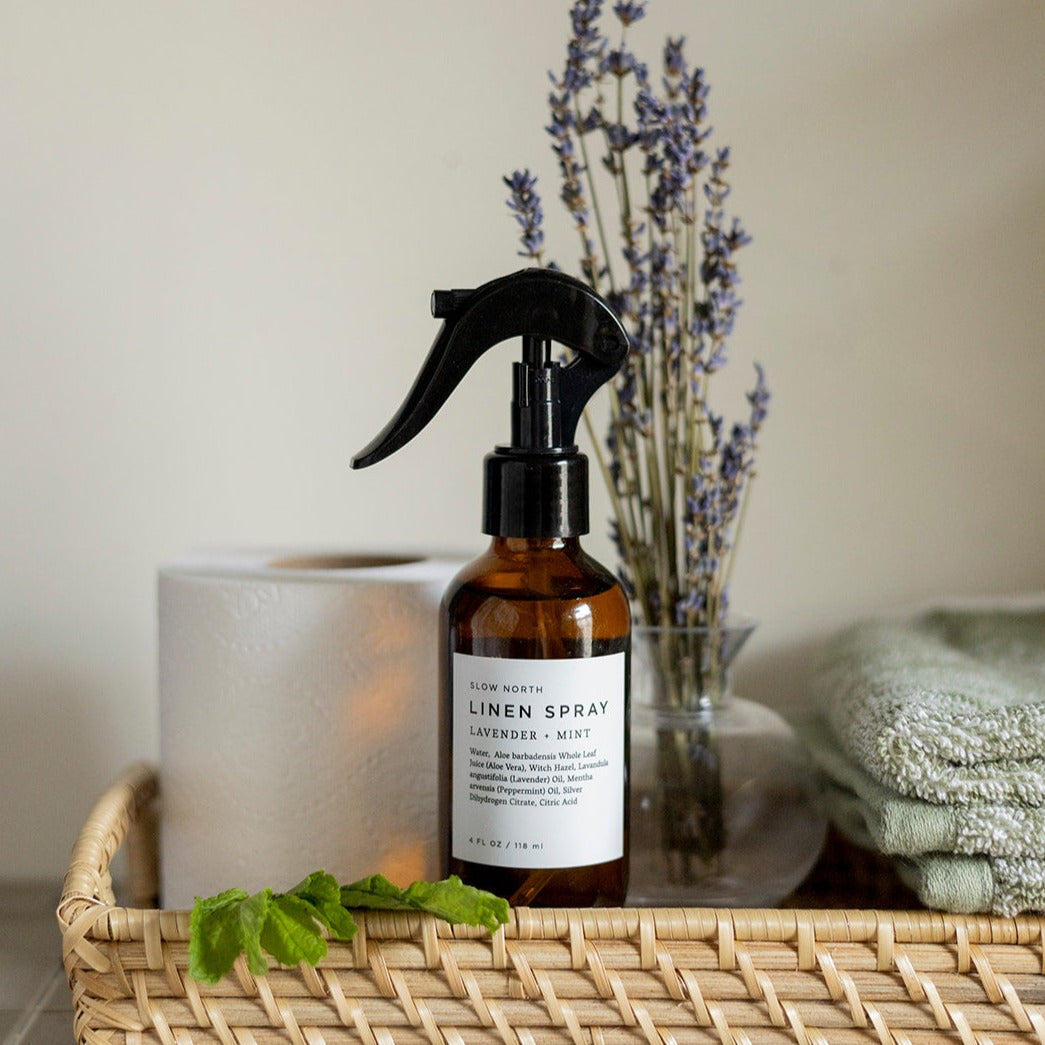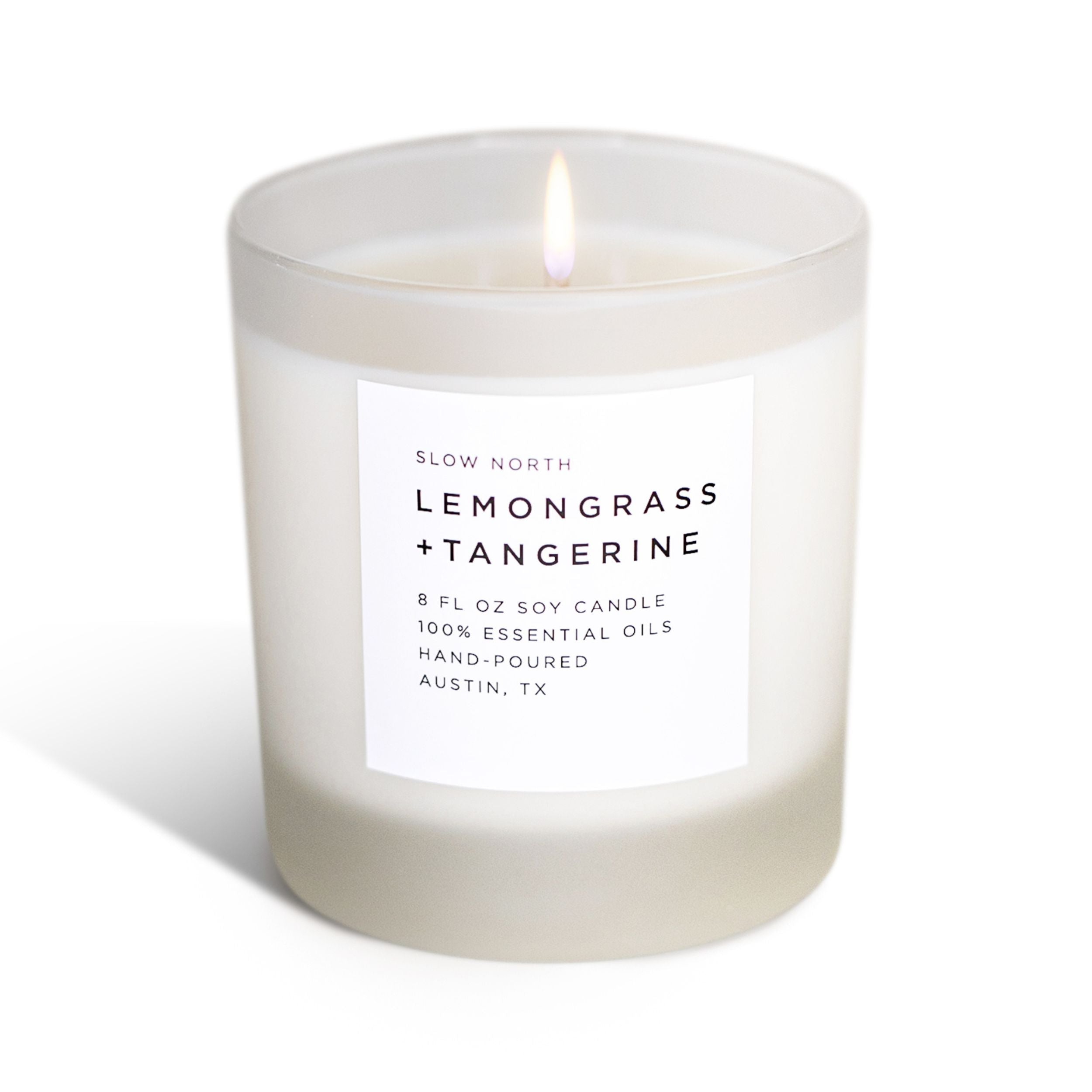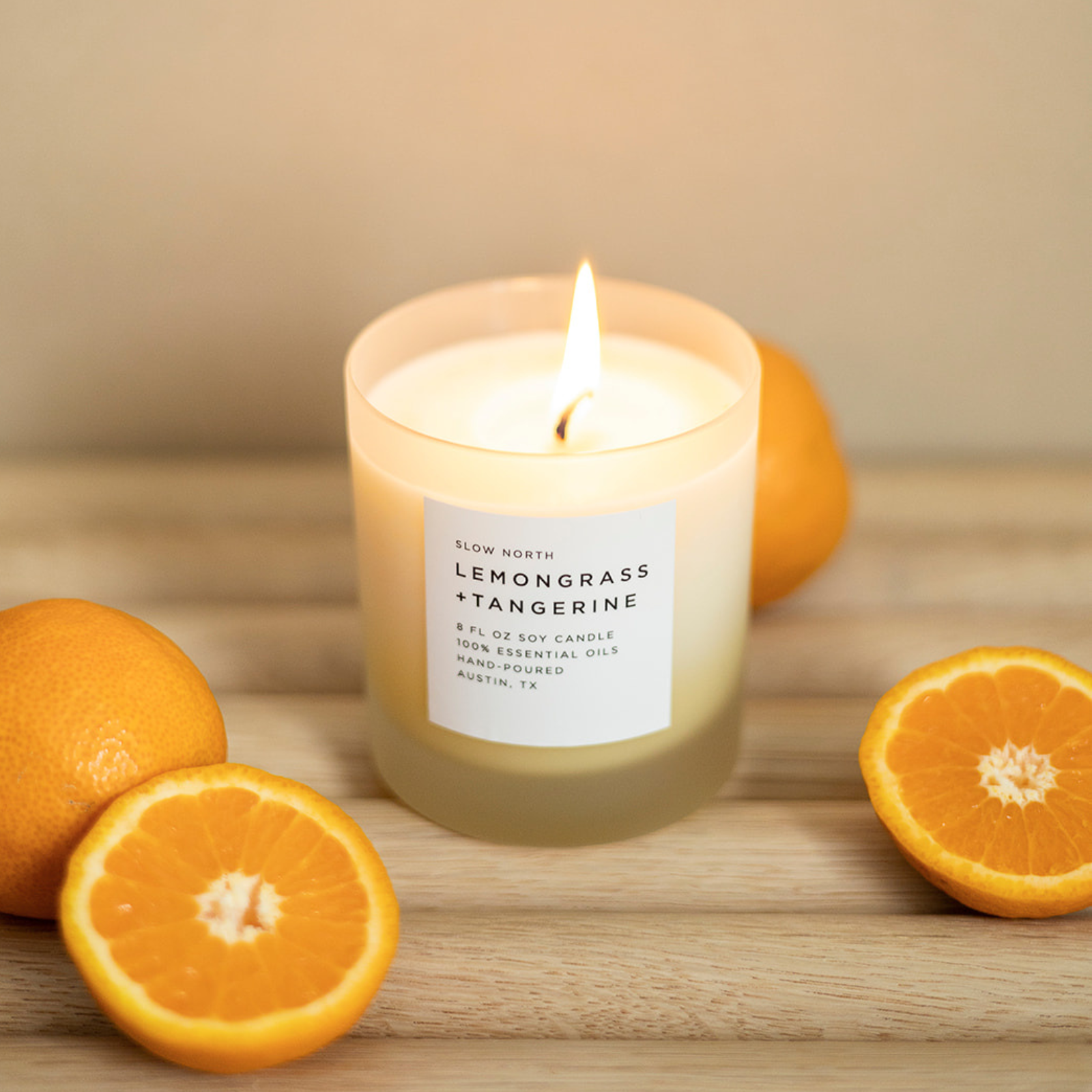Article: A Sustainable, Conscious Buying Guide to Non-Toxic, Paraffin-Free, and Clean-Burning Candles

A Sustainable, Conscious Buying Guide to Non-Toxic, Paraffin-Free, and Clean-Burning Candles

The journey to a healthier home begins with small, mindful choices. In a world inundated with artificial fragrances and synthetic products, the desire for clean, natural alternatives has never been stronger. One such simple swap is choosing non-toxic candles from non toxic candle brands like Slow North. In this comprehensive guide, we'll explore what non-toxic candles are, why they matter, and how they differ from conventional candles. Let's begin on this journey together, one beautiful, fragrant flame at a time.
Section 1: What Are Non-Toxic Candles?
Non-toxic candles are candles made without harmful or synthetic chemicals. They are typically crafted from natural waxes like soy, coconut or beeswax, scented with pure essential oils, and feature wicks made from natural fibers like cotton or wood.
Here's a closer look at the primary components:
- Wax: Traditional candles often use paraffin wax, a byproduct of petroleum refining. Non-toxic candles, like Slow North's, favor natural alternatives such as soy wax, which burns cleaner and comes from renewable, American-grown sources.
- Scent: Authentic essential oils provide the fragrance in non-toxic candles, offering genuine, delightful aromas without synthetic perfumes or chemical additives.
- Wick: Many mass-produced commercial candles use wicks containing metal cores to help them stand up straighter, which can release harmful compounds into the air you breathe. Non-toxic candles are only made with wicks made of natural fibers, and coated with vegetable wax - ensuring a safe, clean burn.
Comparison with Traditional Candles
Non-toxic candles prioritize health, well-being, and environmental stewardship. They symbolize a departure from the artificial chemical-laden products that have become all too common in modern living spaces.
Here's a simple comparison table to summarize:
| Attribute | Traditional Candles | Non-Toxic Candles |
|---|---|---|
| Wax | Paraffin | Soy, Beeswax, Coconut |
| Scent | Synthetic Fragrance | Essential Oils, Unscented |
| Wick | Metal Core | Natural Fibers |
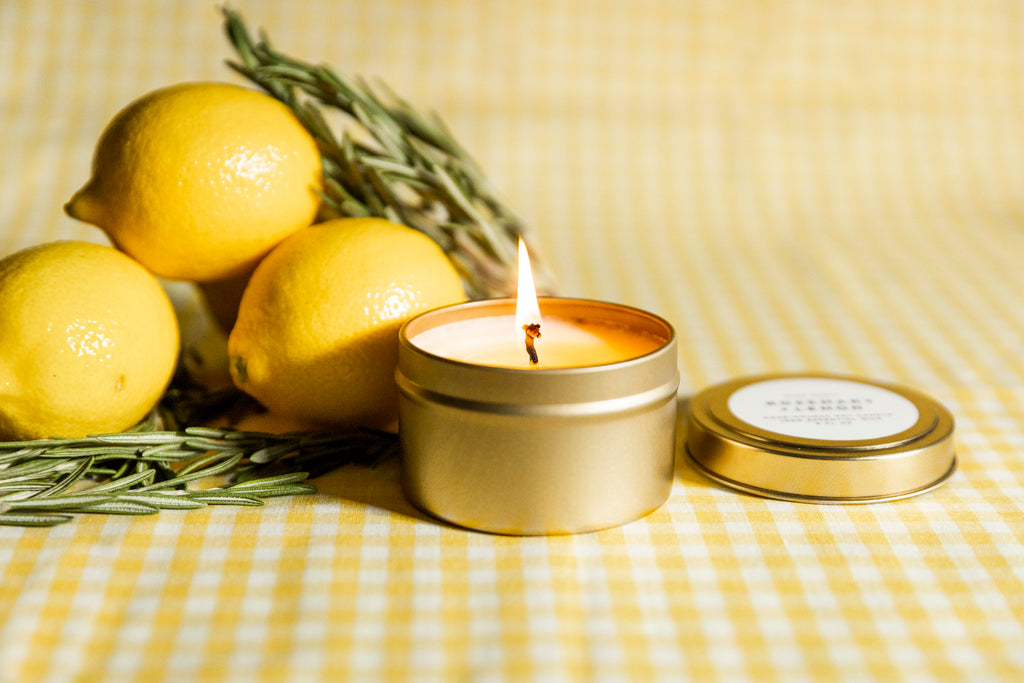
Section 2: Why Choose Non-Toxic Candles?
Health Benefits
Breathing in synthetic fragrances from regular candles can lead to a host of health concerns, including headaches, respiratory issues, and even hormone disruptions. Non-toxic candles, scented with pure essential oils, provide a healthier option that supports well-being.
Environmental Impact
Natural candles are not just better for you—they're better for the Earth. Sustainable practices guide the sourcing of ingredients like American-grown soy wax, ensuring a lower environmental footprint as a renewable resource. From Slow North's commitment to reusable and recyclable packaging to the biodegradable nature of the products themselves, choosing non-toxic candles aligns with a greener lifestyle.
Psychological and Emotional Well-being
Lighting a candle is often associated with relaxation, meditation, and mindfulness. By selecting non-toxic candles, you enhance this experience with authentic scents that can evoke positive emotions, promote relaxation, and contribute to a holistic approach to self-care through aromatherapy.
Section 3: How to Choose the Best Non-Toxic Candles
Identify the Ingredients
Look for candles that explicitly list their ingredients. Natural waxes, pure essential oils, and natural fiber wicks are key. Transparency in labeling reflects a brand's commitment to providing safe and natural products, just like Slow North's approach.
Consider the Source
Where are the candles made? Who makes them? Supporting local, artisanal businesses often aligns with choosing non-toxic and environmentally responsible products. Slow North’s handcrafted candles, made in Austin, TX, are a testament to this ethos.
Trust Your Senses
When evaluating a candle, trust your senses. High-quality essential oils provide a complex, rich fragrance that synthetic scents just can't replicate. The next time you visit a candle section in a store, compare the aromas of natural versus conventional candles, and you'll surely notice the difference.
Read Reviews
Reviews from real customers can provide insights into a product's quality and performance. Here's what some Slow North customers have said about their experience:
Section 4: Aromatherapy and Wellness with Slow North
In the world of scented products, essential oils stand out for their natural, therapeutic properties. Slow North's essential oil candles offer more than just pleasant fragrances; they open the door to the calming, invigorating, and mood-enhancing world of aromatherapy. Here's how:
1. Relaxation and Stress Relief
Essential oils like lavender, chamomile, and cedarwood are known for their calming effects. Slow North's Lavender + Cedar candle is perfect for unwinding after a stressful day, promoting relaxation and a peaceful ambiance.
2. Invigoration and Energy Boost
Citrus scents like lemon and orange can uplift and energize. Slow North’s Rosemary + Lemon candle, with its invigorating aroma, can refresh the mind and awaken the senses, making it an ideal choice for mornings or afternoon work sessions.
3. Mood Enhancement and Comfort
Rose, geranium, and other floral scents are linked to emotional well-being. The Geranium + Rose candle from Slow North can bring warmth and comfort to any space, enhancing a sense of joy, nostalgia and connection.
4. Connection to Nature
With scents like Of The Sea and Forest Bathing, Slow North offers a sensory gateway to nature. These fragrances inspire tranquility and mindfulness, akin to a gentle stroll through a forest or a calming day by the ocean.
5. Sleep and Restfulness
Certain essential oils promote a good night's sleep. Slow North’s offerings, such as the Eucalyptus + Lavender candle, can set the stage for restful slumber, aiding in relaxation before bedtime.
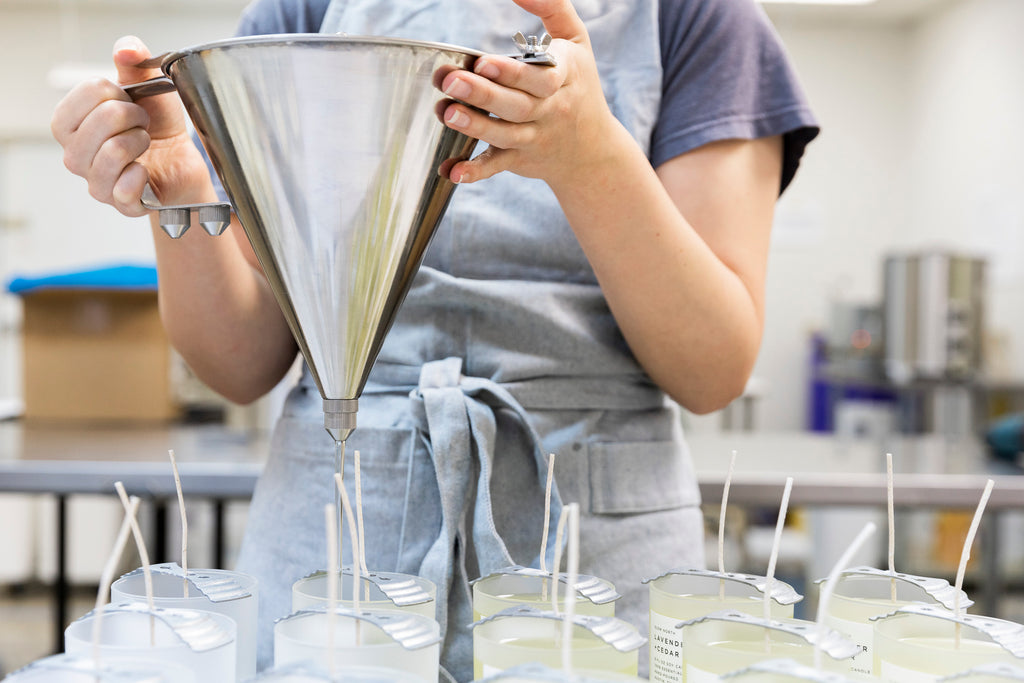
6. Customizable Aromatherapy Experience with Diffuser Blends
Beyond candles, Slow North's essential oil diffuser blends allow you to create a tailored aromatherapy experience. Mix and match oil blends to address specific needs, whether it's for relaxation, concentration, or invigoration.
7. Hot & Cold Therapy Packs for Physical Well-being
Slow North's handcrafted hot and cold therapy packs, filled with unscented lentils, align with the brand's holistic approach to well-being. These packs provide natural relief for physical discomfort, complementing the soothing effects of the essential oil candles.
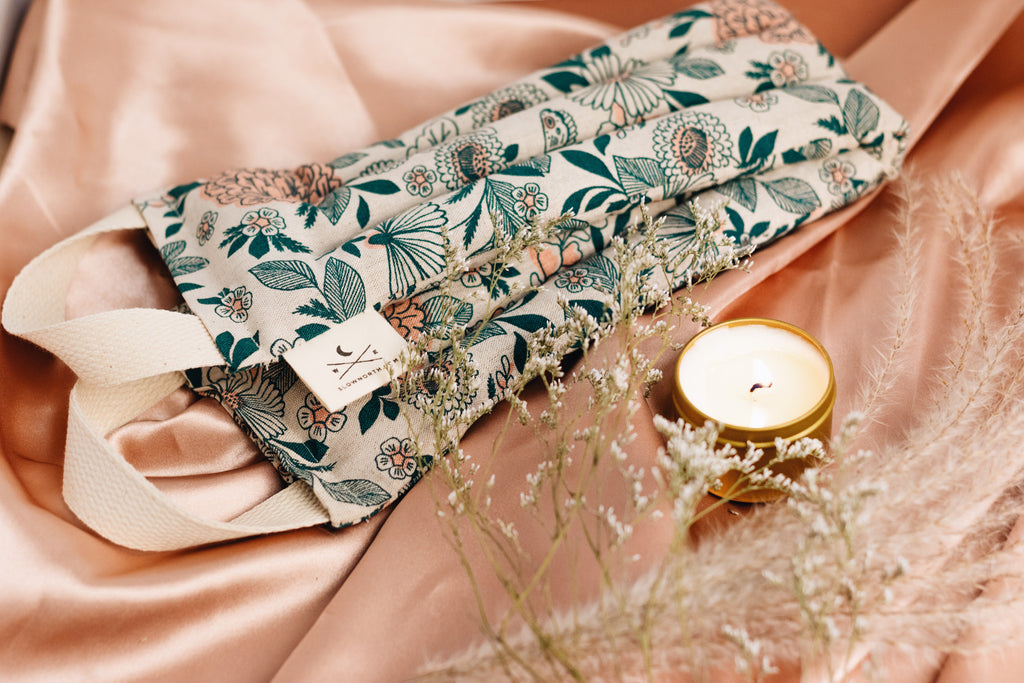
Section 5: Essential Oils for Candles - A Natural Choice
Introduction to Essential Oils in Candles
In a world where artificial fragrances are common, essential oils present a refreshing, natural alternative. Unlike synthetic scents, essential oils are derived from plants, retaining the natural essence and therapeutic properties. Essential oils are extracted from plants, usually by cold pressing or steam distillation, and are a renewable resource. They contain highly concentrated, aromatic extracts from plants that often have therapeutic or medicinal benefits. This makes them not only a delightful choice for aromatics but also a conscious decision for health and well-being. In addition to smelling fantastic, many essential oils also have aromatherapeutic benefits!
Exploring Slow North's Essential Oil Candles
Slow North takes pride in crafting candles infused with pure essential oils. Our range of scents is inspired by nature, each one carefully blended to create a unique and soothing experience. From calming lavender to invigorating eucalyptus, our essential oil candles are more than just a pleasant fragrance; they're a sensory journey.
Scientists have found that the aromas from essential oils (aromatherapy) may stimulate the limbic system, the part of your brain that’s involved in long-term memory, emotions, and physiological functions like blood pressure, heart rate, and breathing.
Many individual essential oils have also been extensively studied; lavender, for example, has numerous beneficial properties, including pain relief, stress relief, and help with sleep. Essential oils are also completely safe to burn in candle form.
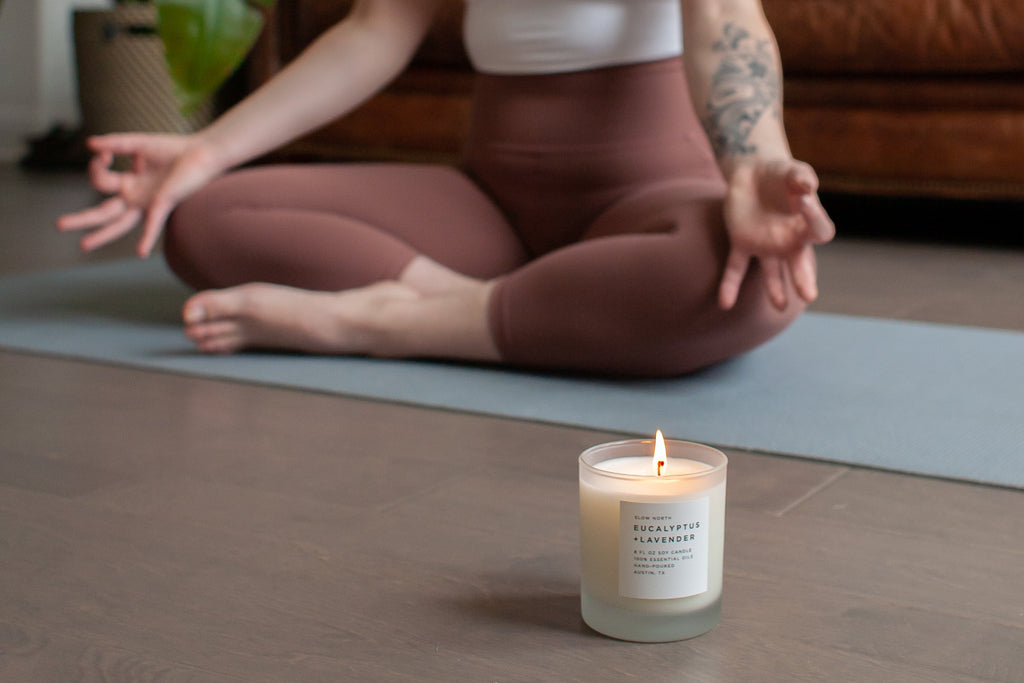
Why Essential Oils Make Sense for the Health-Conscious Consumer
The benefits of essential oils extend beyond their pleasant aroma. When used in candles, they provide a non-toxic alternative that aligns with a lifestyle focused on wellness. Unlike artificial fragrances, which may contain harmful chemicals, essential oils offer a clean, therapeutic experience. Whether you're embracing yoga, mindfulness, or simply seeking a healthier home environment, essential oil candles align with your values.
How to Use Essential Oil Candles in Your Home
Essential oil candles offer versatility in creating ambiance and personalizing your living space. You can use them to set a calming mood for meditation, add a romantic touch to dinner, or simply enjoy a relaxing evening. Experiment with different scents to find what resonates with you and your family. With Slow North's variety, you can create a customized olfactory experience that enhances your home and life.
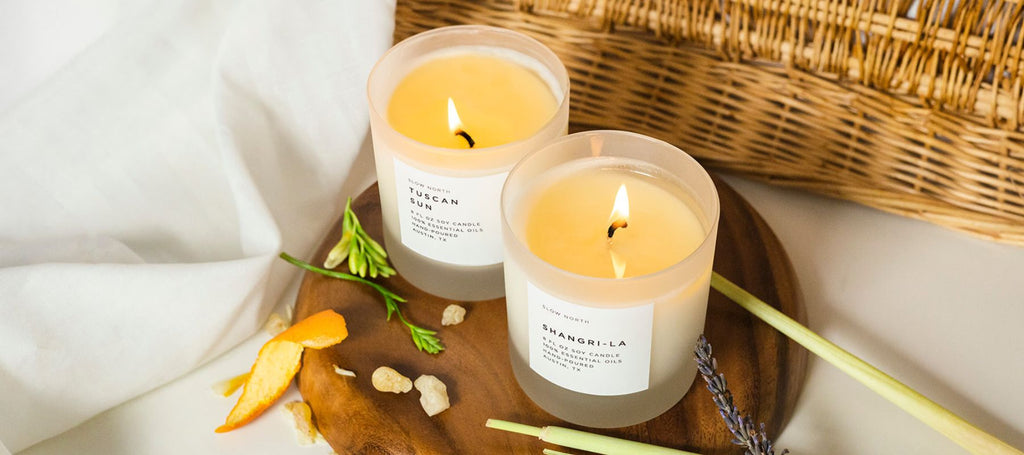
Section 6: How to Choose the Best Non-Toxic Candles
Understanding What Makes a Candle Non-Toxic
Non-toxic candles are not just a trendy phrase; they are a mindful choice for those prioritizing health and environmental responsibility. Key factors to consider include the type of wax (soy, beeswax, etc.), wick material, and the absence of harmful additives. Essential oils as scents are a crucial aspect of non-toxic candles, offering natural fragrances free from synthetic chemicals.
Slow North's Commitment to Non-Toxic, Clean Burning Candles
At Slow North, our candles are crafted with integrity, adhering to the principles of non-toxic and clean burning. We use soy wax, a renewable and biodegradable resource, and carefully selected essential oils to infuse our candles with natural scents. Our commitment goes beyond products; it's a lifestyle choice promoting wellness, sustainability, and connection to nature.
Comparing with Other Brands
Choosing non-toxic candles involves understanding what to look for and what to avoid. While we won't name competitors, we encourage consumers to be aware of the ingredients and production practices. Look for transparency in labeling, ethical sourcing, and adherence to natural principles. Slow North stands out in offering affordable luxury, with an unwavering commitment to quality and sustainability.
Guidance for Making the Swap to Non-Toxic Candles
Transitioning to non-toxic candles doesn't have to be overwhelming. Start with one small change at a time. Explore different scents and brands, ask questions, and make informed decisions. Embrace the journey of exploration with Slow North as your gentle guide, and discover how essential oils and natural candles can transform your living space into a haven of health and harmony.

Section 7: Non-Toxic Candles for Allergies and Sensitivities
The Issue with Traditional Candles
For those with allergies or sensitivities to fragrances, traditional candles can be a hidden source of discomfort. Synthetic fragrances and certain waxes may release airborne irritants, leading to headaches, nasal congestion, or other allergic reactions.
Non-Toxic Alternatives for Sensitive Individuals
Slow North's non-toxic candles offer a wonderful solution. By using essential oils and natural ingredients, we minimize the risk of allergic reactions. “Fragrance” can include any number of chemicals and compounds, many of which can be known endocrine disruptors like phthalates or parabens, or even volatile organic compounds (VOCs).
In addition to being toxic, synthetic fragrances can also cause headaches. Our candles are crafted with care, making them suitable even for those with sensitivities.
Making the Right Choice
When selecting candles for sensitive individuals, consider the following:
- Wax Type: Soy, beeswax, or other natural waxes are preferred.
- Fragrance: Choose candles scented with essential oils.
- Transparency: Look for clear ingredient labeling and brands committed to natural principles.

Section 8: Caring for Non-Toxic Candles
Proper Burning Practices
Caring for your non-toxic candles ensures they burn efficiently and last longer. Here are some tips:
- Trim the Wick: Keep the wick trimmed to about 1/4 inch to avoid excess smoke.
- Burn Evenly: Allow the candle to melt evenly across the surface before extinguishing.
- Avoid Drafts: Place candles away from drafts to prevent uneven burning.
Storing and Cleaning
- Storage: Keep candles in a cool, dark place to preserve their scent.
- Cleaning: Remove any debris from the candle surface and wipe with a soft cloth if needed.
Embracing the Slow North Experience
Slow North offers more than just candles; we provide a sensory experience embracing wellness and nature. With proper care and understanding, you can fully enjoy the essence of Slow North in your home.
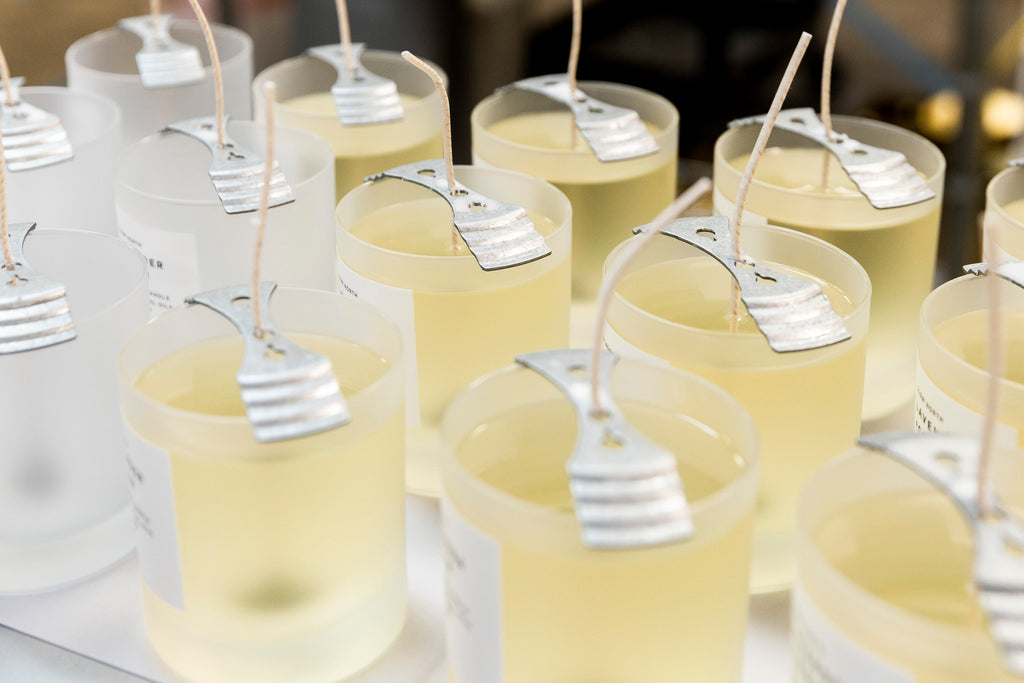
Embrace a Healthier, More Sustainable Lifestyle with Slow North
At Slow North, we believe in the power of small changes. Our journey began with a desire to create healthier, more sustainable options for our home and family, and we are honored to guide you on this path as well. Essential oils and non-toxic candles are not merely products; they're a reflection of our values and commitment to wellness, nature, and community.
Our expansive range of candles, diffuser blends, bath & body products, and more offer you the opportunity to transform your living space into a haven of tranquility and health. Embrace the journey, one small swap at a time, and discover the joy of connecting with nature through Slow North.

Frequently Asked Questions: (FAQ):
Q: What makes a candle non-toxic?
A: Non-toxic candles are made from natural ingredients like soy or beeswax, free from potentially harmful additives, synthetic fragrances, and paraffin. At Slow North, we use only soy wax and pure essential oils to create a clean-burning experience you can trust.
Q: How can I recognize a truly non-toxic candle?
A: Look for candles made with 100% natural waxes (such as soy or beeswax), scented with 100% essential oils (or unscented), and made with cotton, paper or wooden wicks. Slow North fully discloses all ingredients, so you can be confident in your choice.
Q: What are soy candles?
A: Soy candles are made from soy wax, or a soy wax blend. After soybeans are harvested, they’re cleaned, cracked, de-hulled, and rolled into flakes. Oil is extracted from the flakes, and then dehydrogenated, a process which converts the oils from unsaturated to saturated, creating a shelf-stable wax that stays solid at room temperature.
Q: Why are soy candles better?
A: Soy candles don’t emit volatile organic compounds (VOCs) or harmful toxins when burned, and they’re made from a renewable source (soybeans).
VOCs are compounds that are given off by household products like paints, laundry detergent, and cleaners. They can be extremely toxic, and are often found in high concentrations indoors. The more natural products we can use (like natural candles), the fewer VOCs we’ll be emitting into our atmosphere.
Q: Are Slow North candles eco-friendly?
A: Absolutely! Our commitment to environmental sustainability includes using biodegradable, reusable, and recyclable materials. We prioritize ethical sourcing and offer products that align with our shared eco-conscious values.
Q: Where are Slow North candles made?
A: All our products are handcrafted by our team in Austin, TX. We take pride in our local production and adherence to high-quality standards.
Q: How do I care for my Slow North candles?
A: Care includes trimming the wick to 1/4 inch, allowing an even melt pool, and storing in a cool, dark place. Our candles are designed to offer a long-lasting, enjoyable experience with proper care.
Q: How do non-toxic candles fit into a clean living lifestyle?
A: Non-toxic candles align with a clean living philosophy by reducing exposure to artificial chemicals and fragrances. Slow North's products offer natural solutions for fragrance and self-care in your home.
Q: Can you recycle or reuse the container your candle comes in?
A: Some containers (like Slow North’s drink-safe glass tumblers) can be cleaned out and reused for anything when your candle is finished. Just discard the last bits of remaining wax, and wipe the container clean with rubbing alcohol.
Q: Can I use Slow North candles if I have sensitivities or if traditional candles give me headaches?
A: Absolutely! Traditional candles contain synthetic fragrances and chemicals that can cause headaches or reactions. Slow North candles are crafted with natural ingredients, such as pure essential oils, that minimize these risks. Our full disclosure of ingredients ensures that you can choose products that suit your specific needs and preferences without the worry of headaches or sensitivities.
Q: How can I learn more about Slow North products?
A: Explore our website, sign up for our newsletter, or follow us on Instagram, Facebook, Pinterest, and TikTok. We love sharing our passion for natural living and connecting with our community!
Reference Sources for More Info:
-
Artificial Fragrances:
- Steinemann, A. (2016). "Fragranced consumer products: exposures and effects from emissions." Air Quality, Atmosphere & Health, 9(8), 861-866. Link
-
Health Effects of Paraffin and Synthetic Ingredients:
- Nøst, T.H., et al. (2016). "An emerging issue in environmental health: Exposures and effects of paraffin products." Environmental Research, 146, 76-89. Link
-
Benefits of Soy Wax and Natural Waxes:
- Samsiah, S., et al. (2013). "A review on the burning tests and emission analysis of candles." Journal of Physical Science, 24(2), 125-146. Link
-
Natural Alternatives and Sensitivities:
-
Dodson, R.E., et al. (2012). "Endocrine Disruptors and Asthma-Associated Chemicals in Consumer Products." Environmental Health Perspectives, 120(7), 935-943. Link
-

